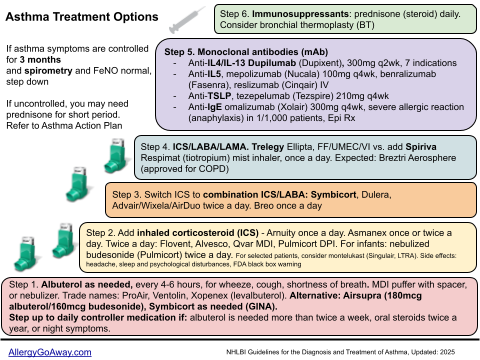Can impulse oscillometry replace spirometry as a test of asthma control?
Guidelines advocate the use of spirometry to assess pulmonary function in asthmatic patients. Impulse oscillometry (IOS) is an effort-independent test performed during tidal breathing.
IOS may be used to assess the total and central airway resistance at 5 Hz (R5) and 20 Hz (R20), respectively, and hence derive the peripheral airway resistance from the difference (R5-R20).
This study compared spirometry and IOS as tests of global airway function (FEV1, FEV1/FVC, R5) and putative measures of small airways function (FEF25-75, R5-R20).
Spirometry and IOS measurements from physician-diagnosed asthmatics were linked to a health informatics database for oral steroid and SABA use 1 year prior to the index measurements.
442 patients had both spirometry and IOS, the mean FEV1 was 86% predicted, and 94% were on ICS, with a median dose 800 mcg/day. IOS and spirometry measures were equally predictive of impaired asthma control for both oral steroid and SABA use.

Asthma Treatment Options in 6 Steps (click to enlarge the image).
References:
Assessment of spirometry and impulse oscillometry in relation to asthma control. Manoharan A et al. Lung. 2015 Feb;193(1):47-51.
http://www.ncbi.nlm.nih.gov/pubmed/25516285
Guidelines advocate the use of spirometry to assess pulmonary function in asthmatic patients. Impulse oscillometry (IOS) is an effort-independent test performed during tidal breathing.
IOS may be used to assess the total and central airway resistance at 5 Hz (R5) and 20 Hz (R20), respectively, and hence derive the peripheral airway resistance from the difference (R5-R20).
This study compared spirometry and IOS as tests of global airway function (FEV1, FEV1/FVC, R5) and putative measures of small airways function (FEF25-75, R5-R20).
Spirometry and IOS measurements from physician-diagnosed asthmatics were linked to a health informatics database for oral steroid and SABA use 1 year prior to the index measurements.
442 patients had both spirometry and IOS, the mean FEV1 was 86% predicted, and 94% were on ICS, with a median dose 800 mcg/day. IOS and spirometry measures were equally predictive of impaired asthma control for both oral steroid and SABA use.
Asthma Treatment Options in 6 Steps (click to enlarge the image).
References:
Assessment of spirometry and impulse oscillometry in relation to asthma control. Manoharan A et al. Lung. 2015 Feb;193(1):47-51.
http://www.ncbi.nlm.nih.gov/pubmed/25516285